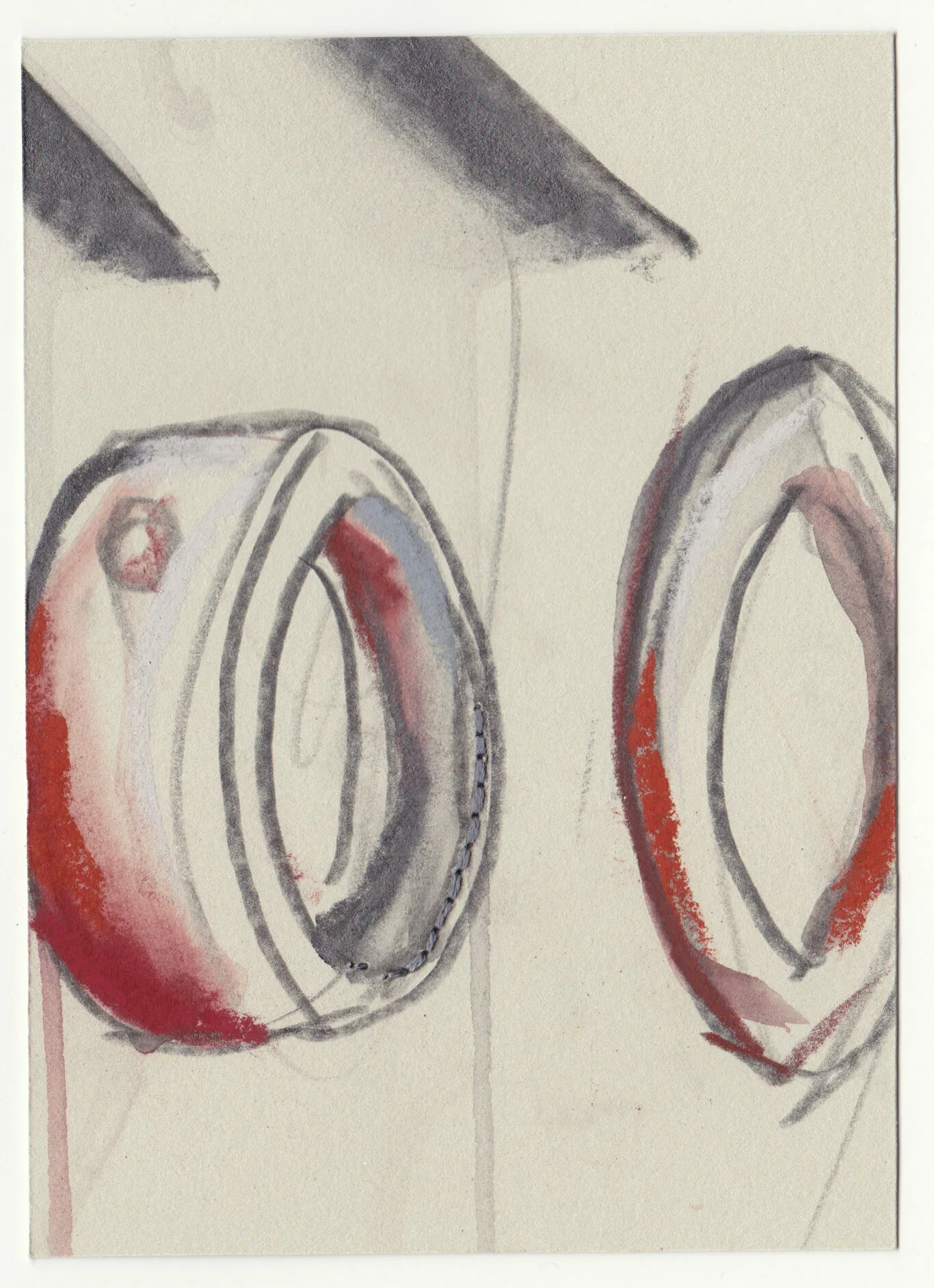What Holds Us Together, series 3, no. 25. Graphite, pastel and cotton floss on paper. 2020
Sims Bayou, southeast Houston, Texas. A landscape filled with boundaries, both natural and made by men. The bayou creates its own, snaking past the Kinder Morgan refinery, fortified by fences, train tracks and guys in slow-moving white pickup trucks. It meanders past Milby Park, where signs warn against eating the fish and a constant heavy sulfur smell coats my throat and echoes in a not-quite-formed headache waiting in the back of my skull. The mud at its edge collects on my shoe and will, without vigilance, track on the floor of someone close to me who is fighting cancer.
There are lines here not to cross. But beauty exists despite them - in defiance of them - in the long, luscious grass swaying in the wind. In the spiders, ants and pill bugs still digging their tunnels through the tainted earth. In the turtles clustered together on branches poking out of a nearby algae-covered marsh; in the egret casing the water for its next meal and the black-winged butterfly that flutters past our noses lazily, as though nothing could possibly be wrong…
It is the end of 2020. A year defined by pain and conflict: a deadly pandemic; the loss of jobs, small businesses and entire industries; countless ecological disasters; and a long-overdue reckoning of racial injustice plaguing our western culture for too many centuries. We’re still stuck in unknowns all so dense, multitudinous and repetitious that it has been damned hard to imagine, let alone actually see any kind of way out. But it seems to me there’s a common thread in it all, a parting of the clouds, visible in the very boiling points themselves – those boundaries crossed – that might give rise to change. They are ruptures, collisions and explosions that back us into corners, where no way out exists but through. They have the potential to transform us and the way we see ourselves and the roles we play in the world.
But how this change manifests depends upon our willingness to reflect, re-evaluate and truly consider our own behaviors in terms of how they affect not only ourselves or our families, but our larger communities, what or whom they depend upon, the health of the rest of the world and all its living beings.
We are connected. If 2020 teaches us this, and if the lesson sticks, perhaps the pain will one day pay off for the lives of future generations.

